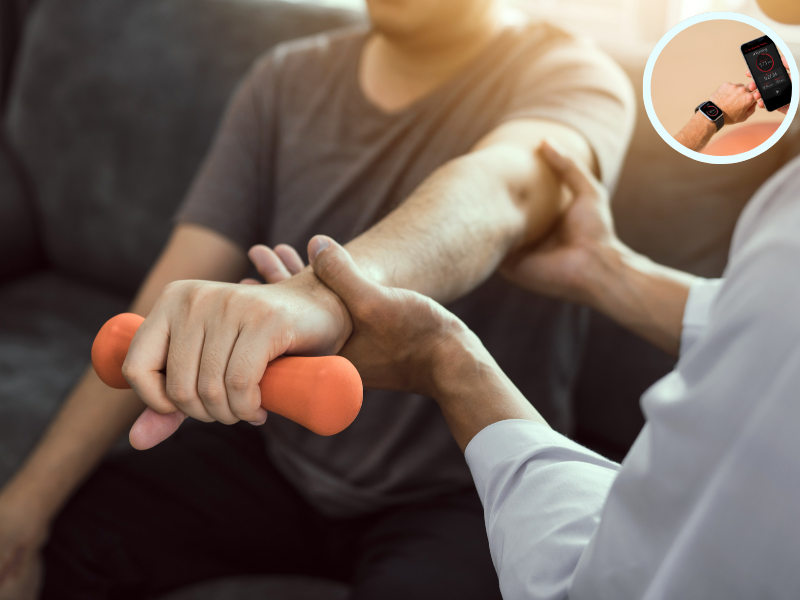Digital Biomarkers: Using Smartphones for the Passive Monitoring of Neurodegenerative Diseases

Presented by: Graham Jones, Head of Research and Innovation, Novartis
Edited by: Ben Norris
Passive monitoring has the potential to be a huge aid in the early detection of neurodegenerative diseases such as Alzheimer’s, Parkinson’s, and other central nervous system (CNS) disorders. By detecting the initial symptoms of these diseases through digital biomarkers, healthcare regimes can be coordinated to better approach these irreversible healthcare disorders earlier in their development. However, in order for this approach to be effective for longitudinal analysis, user-friendly low-friction devices are essential. Fortunately for Graham Jones, Head of Research and Innovation at Novartis, suitable biometric devices already exist and are near-ubiquitous: our smartphones.
Background on Neurodegenerative Diseases
With neurodegenerative diseases, a vital aspect in their mitigation is the timeframe for identification. There are currently no clinical treatments which can prevent the onset of these diseases, but if they can be delayed by one to two years this can have a billion-dollar impact globally. Alzheimer’s disease is the most common cause of dementia in the UK, and can inhibit memory, cognitive recognition, and overall brain function. As a progressive condition, Alzheimer’s develops gradually over several years and slowly increases in severity: the first signs of Alzheimer’s disease are often minor memory problems which can be difficult to detect.

A preventative monitoring approach that captures neurodegenerative diseases in the earliest stages of development may represent one of the most proactive approaches to treatment. A key focus on this approach has been the use of digital biomarkers to detect Alzheimer’s, harnessing advances in consumer-grade mobile and wearable technologies. By integrating monitoring capabilities into smart devices, clinicians and healthcare providers may be able to catch the development of neurodegenerative diseases before they progress.
Composite Measures in Passive Monitoring
As Graham Jones explained to Biomarkers & Immuno US: 2022, devices of lower friction are ubiquitous. “Every year the cost of goods goes down and the sophistication goes up,” he said. Smartphones are a prime example: the standard smartphone made in 2019 may have included a barometer, an electrocardiograph, and a thermometer, on top of a plethora of other biometric features which can function as digital biomarkers. “We’re aware of Moore’s law on computing power — there’s also Amara’s law, which states that we overhype technology in the short-term but underhype it in the long-term,” he continued. “The idea behind this would be that at some point in a patient’s life you have some type of signal, which would trigger a more traditional examination — maybe a PET scan or a CT scan.” Once the signal is identified, the patient’s condition can be interrogated.
In this way, work is being done to validate smartphones as biometric devices as a method of monitoring a patient’s health. “What’s really important is that this is what lots of people use,” continued Jones. He gave the example of analysing the voices of smartphone users to detect for early markers of Alzheimer’s or Dementia. “What we’re looking for here is the subsistence in human speech,” Jones said. “In terms of voice, it’s not just speech — it’s the acoustics behind it. The voice articulation and resonance presenting are all important parts of the subsystem — when you put it together, you can separate out linguistic features from acoustic features.” A study by a Japanese research group was carried out to investigate different linguistic features in Alzheimer’s. In this scenario, atypical repetition over different days was identified as an indicator of Alzheimer's Disease.
Additional Detection Methods via Digital Biomarkers
Another detection method given by Jones was keystroke analysis — the monitoring of textual inputs on keyboards in home devices and smartphones. As he explained, keystroke analysis interrogates individual typing signatures, providing measures of cadence, syntax, hold time on key, flight time to next key, and pressure exerted on keys. “You can get a lot of information from not just the strokes but the flight time between strokes,” Jones said. This is an approach applicable to a variety of devices, like computers, laptops, tablets, and smartphones.
- Biomarker Qualification: Towards Improved Biomarker Analysis and Validation
- Monitoring Biomarkers for Liver Cirrhosis and Aiding Clinical Qualification of Prognostics
- Overcoming the Regulatory Challenges of Digital Health Technologies
Smartphones and personal biometric devices can also facilitate ocular motor monitoring, with attention to saccadic amplitude and peak velocity — put simply, monitoring the distance moved by the eye when looking between two objects. Multiple sclerosis fatigue induces changes in saccadic peak velocity, making it a useful metric to observe through smartphones and other smart devices which can monitor digital biomarkers. “Real-world evidence can help here,” said Jones, “and it can be useful very early on.”
Agendas for Digital Measures in Biomarker Recording
“There are hundreds of thousands of apps which can be used,” said Jones of the commercial viability of biometric monitoring projects. “There’s a role to play in some of the consumer companies too – companies like Amazon have moved into healthcare.” In terms of progress in the next few years, a major focus will be on defining the agenda for digital measures. “I think that’s the role of existing biomarkers as well as digital,” Jones continued. “The more we can validate and qualify on wearable devices and quantitative biomarkers, the better.”
“The more data we can get and the more we can use that data to improve the algorithms, the better.”
Rounding off, Jones emphasised the utility of passive, composite digital measures in offering high potential for early state disease detection. For biometric smart metrics to be effective for longitudinal analysis, user-friendly low-friction devices are essential. “Passive composite digital measures offer a very high potential for early state disease detection,” said Jones as he concluded his presentation. “We’ll see more and more pharma companies working at scale. The more data we can get and the more we can use that data to improve the algorithms, the better.”
Want to learn more about the latest advances in wearable biometric devices for digital health? Head over to our Biomarkers portal for essential insights from the industry’s best and brightest. If you’d like to register your interest for our upcoming Biomarker Analysis Europe: In-Person conference, visit our event page for more information.







